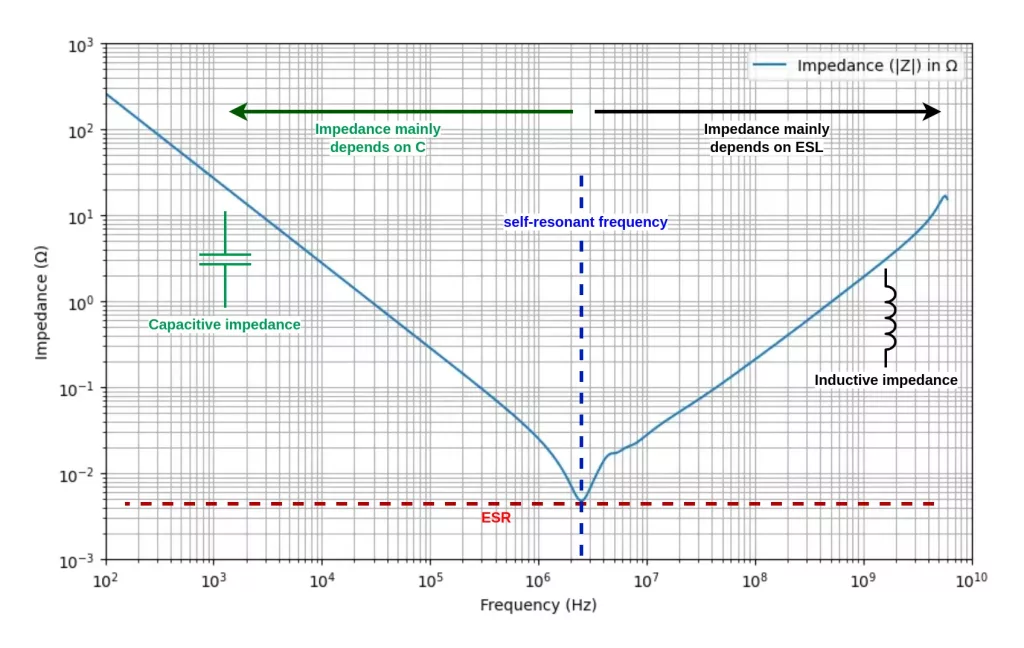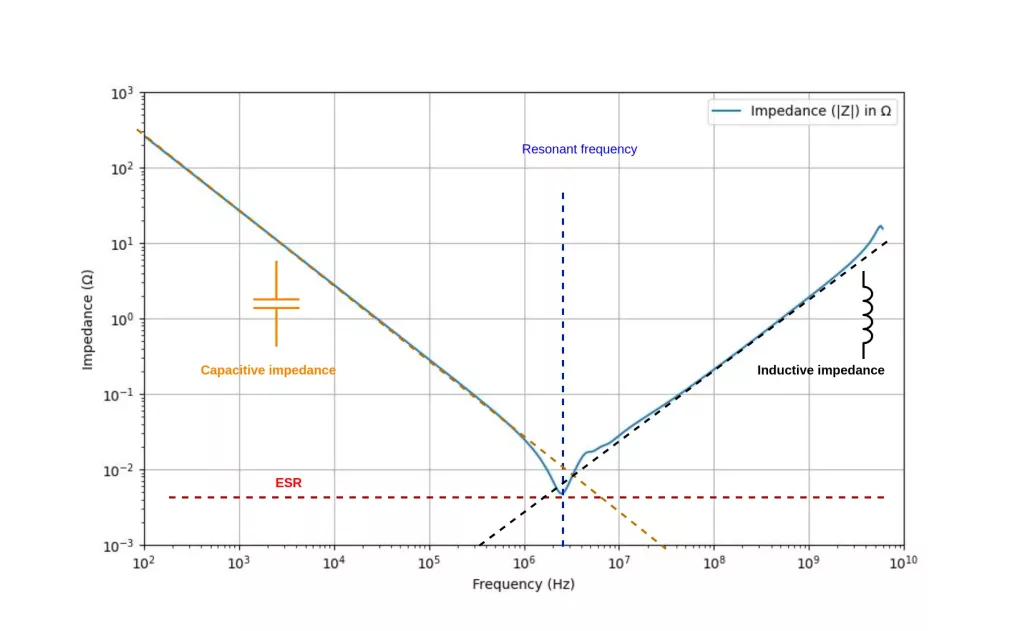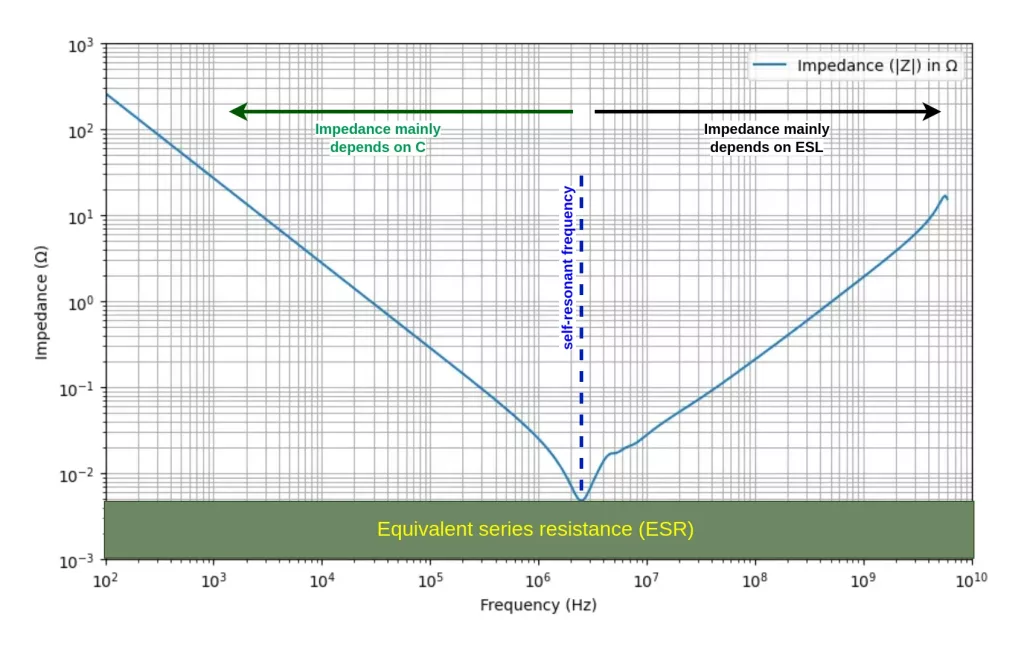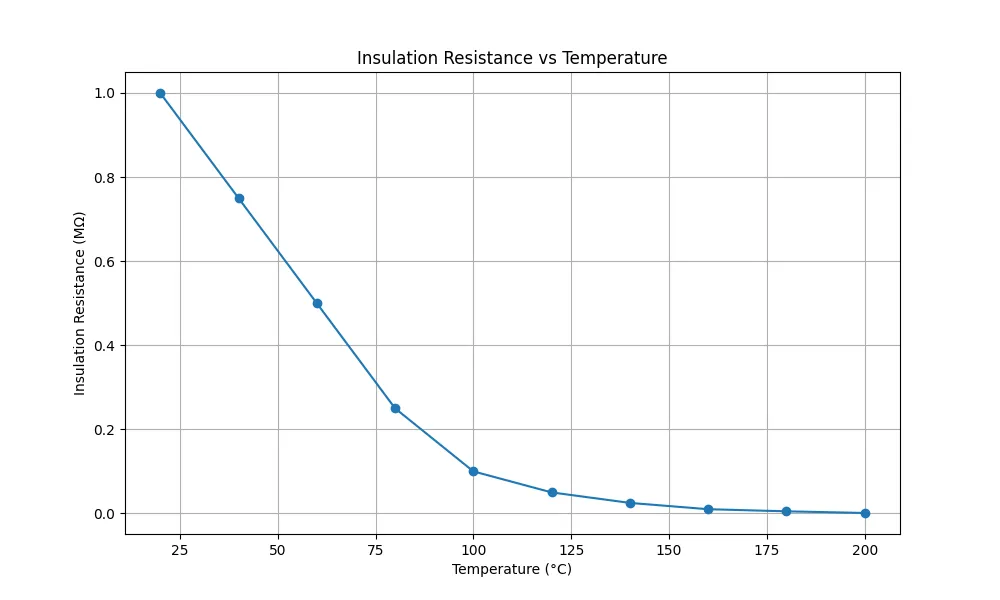The equivalent series inductance (ESL) of a capacitor is one of the important characteristics to consider when selecting a component for your application. It plays a crucial role in how capacitors behave within circuits, especially at high frequencies. In this article, we’ll explore the significance of ESL, understanding its impact on capacitor performance.
What is the ESL of a capacitor?
Equivalent series inductance of a capacitor refers to the effective inductance that arises due to the physical characteristics of a component. It represents an additional inductance in series with the ideal capacitance, impacting performance, especially at higher frequencies. Figure 1 illustrates a simplified equivalent circuit of a capacitor with equivalent series inductance and equivalent series resistance (ESR).

Some of the physical characteristics of a capacitor that give rise to ESL include factors like lead length, materials used in construction, and the arrangement of internal components. Low ESL capacitors typically feature short lead lengths, compact construction, and optimal internal layout design.
How does the ESL of a capacitor affect impedance?
ESL significantly influences a capacitor’s performance by introducing additional inductance in series with its ideal capacitance. This added inductance increases the capacitor’s impedance, particularly at higher frequencies, leading to a resonance point known as the self-resonance frequency (see Figure 2).
Beyond the resonance point, the inductive impedance dominates. This dominance can potentially limit the capacitor’s effectiveness in applications requiring precise frequency response or low impedance.
Mathematically, the impedance of an actual capacitor containing ESL and ESR terms is often expressed as Z = Rs + j(ωLs – 1/(ωC)), where Rs is the series resistance, Ls is the self-inductance due to ESL, ω is the angular frequency of the alternating current signal, and C is the capacitance.
The above equation accounts for the resistive and inductive components introduced by both ESR and ESL. The series resistance contributes to the real part of the impedance, while the inductive and capacitive components form the imaginary part. Refer to our guide on the impedance characteristics of capacitors to learn more.

Minimizing ESL in high frequency applications
Equivalent series inductance can impact signal filtering, alter timing behavior in circuits, and influence power supply stability. It is therefore imperative for engineers to consider and manage ESL. This ensures capacitors meet specific circuit requirements and operate optimally across the frequency range of interest.
Some of the strategies employed by circuit designers to minimize ESL in high-frequency applications include the following:
- Short lead lengths: Circuit designers often opt for capacitors with shorter lead lengths. This choice is rooted in the understanding that longer leads contribute to increased inductance, a factor detrimental to high-frequency performance.
- Surface mount technology (SMT): The adoption of SMT capacitors is a prevalent strategy. These capacitors boast compact designs and minimal lead lengths, making them ideal for high-frequency applications.
- Low-profile and planar designs: Utilizing capacitors with low-profile and planar designs is another effective approach. These capacitor configurations minimize the loop area in the current path, decreasing the overall inductance.
- Strategic capacitor placement: Circuit designers pay careful attention to the placement of capacitors within the circuit. By strategically positioning capacitors, designers aim to minimize the overall loop area, consequently reducing inductive effects.
- Low-inductance configurations: Another key strategy involves selecting capacitor configurations designed explicitly for low inductance. These specialized configurations are tailored to meet the specific demands of high-frequency applications, offering improved performance by minimizing the undesirable effects of inductance.




Pingback: Impedance characteristics of a capacitor -
Pingback: ESR of a capacitor and its effects on impedance -
Pingback: Insulation Resistance of a Capacitor -